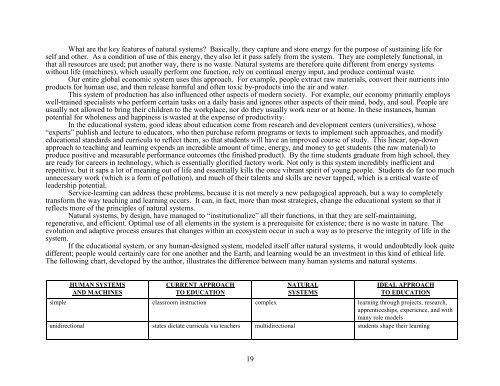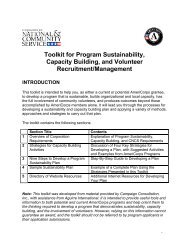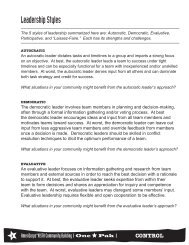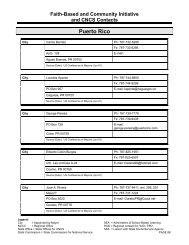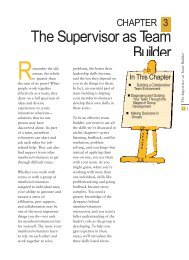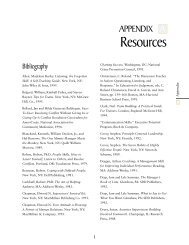MAKE IT LAST FOREVER: THE ... - National Service Resource Center
MAKE IT LAST FOREVER: THE ... - National Service Resource Center
MAKE IT LAST FOREVER: THE ... - National Service Resource Center
You also want an ePaper? Increase the reach of your titles
YUMPU automatically turns print PDFs into web optimized ePapers that Google loves.
What are the key features of natural systems? Basically, they capture and store energy for the purpose of sustaining life for<br />
self and other. As a condition of use of this energy, they also let it pass safely from the system. They are completely functional, in<br />
that all resources are used; put another way, there is no waste. Natural systems are therefore quite different from energy systems<br />
without life (machines), which usually perform one function, rely on continual energy input, and produce continual waste.<br />
Our entire global economic system uses this approach. For example, people extract raw materials, convert their nutrients into<br />
products for human use, and then release harmful and often toxic by-products into the air and water.<br />
This system of production has also influenced other aspects of modern society. For example, our economy primarily employs<br />
well-trained specialists who perform certain tasks on a daily basis and ignores other aspects of their mind, body, and soul. People are<br />
usually not allowed to bring their children to the workplace, nor do they usually work near or at home. In these instances, human<br />
potential for wholeness and happiness is wasted at the expense of productivity.<br />
In the educational system, good ideas about education come from research and development centers (universities), whose<br />
“experts” publish and lecture to educators, who then purchase reform programs or texts to implement such approaches, and modify<br />
educational standards and curricula to reflect them, so that students will have an improved course of study. This linear, top-down<br />
approach to teaching and learning expends an incredible amount of time, energy, and money to get students (the raw material) to<br />
produce positive and measurable performance outcomes (the finished product). By the time students graduate from high school, they<br />
are ready for careers in technology, which is essentially glorified factory work. Not only is this system incredibly inefficient and<br />
repetitive, but it saps a lot of meaning out of life and essentially kills the once vibrant spirit of young people. Students do far too much<br />
unnecessary work (which is a form of pollution), and much of their talents and skills are never tapped, which is a critical waste of<br />
leadership potential.<br />
<strong>Service</strong>-learning can address these problems, because it is not merely a new pedagogical approach, but a way to completely<br />
transform the way teaching and learning occurs. It can, in fact, more than most strategies, change the educational system so that it<br />
reflects more of the principles of natural systems.<br />
Natural systems, by design, have managed to “institutionalize” all their functions, in that they are self-maintaining,<br />
regenerative, and efficient. Optimal use of all elements in the system is a prerequisite for existence; there is no waste in nature. The<br />
evolution and adaptive process ensures that changes within an ecosystem occur in such a way as to preserve the integrity of life in the<br />
system. If the educational system, or any human-designed system, modeled itself after natural systems, it would undoubtedly look quite<br />
different; people would certainly care for one another and the Earth, and learning would be an investment in this kind of ethical life.<br />
The following chart, developed by the author, illustrates the difference between many human systems and natural systems.<br />
HUMAN SYSTEMS<br />
AND MACHINES<br />
CURRENT APPROACH<br />
TO EDUCATION<br />
NATURAL<br />
SYSTEMS<br />
IDEAL APPROACH<br />
TO EDUCATION<br />
simple classroom instruction complex learning through projects, research,<br />
apprenticeships, experience, and with<br />
many role models<br />
unidirectional states dictate curricula via teachers multidirectional students shape their learning<br />
19


